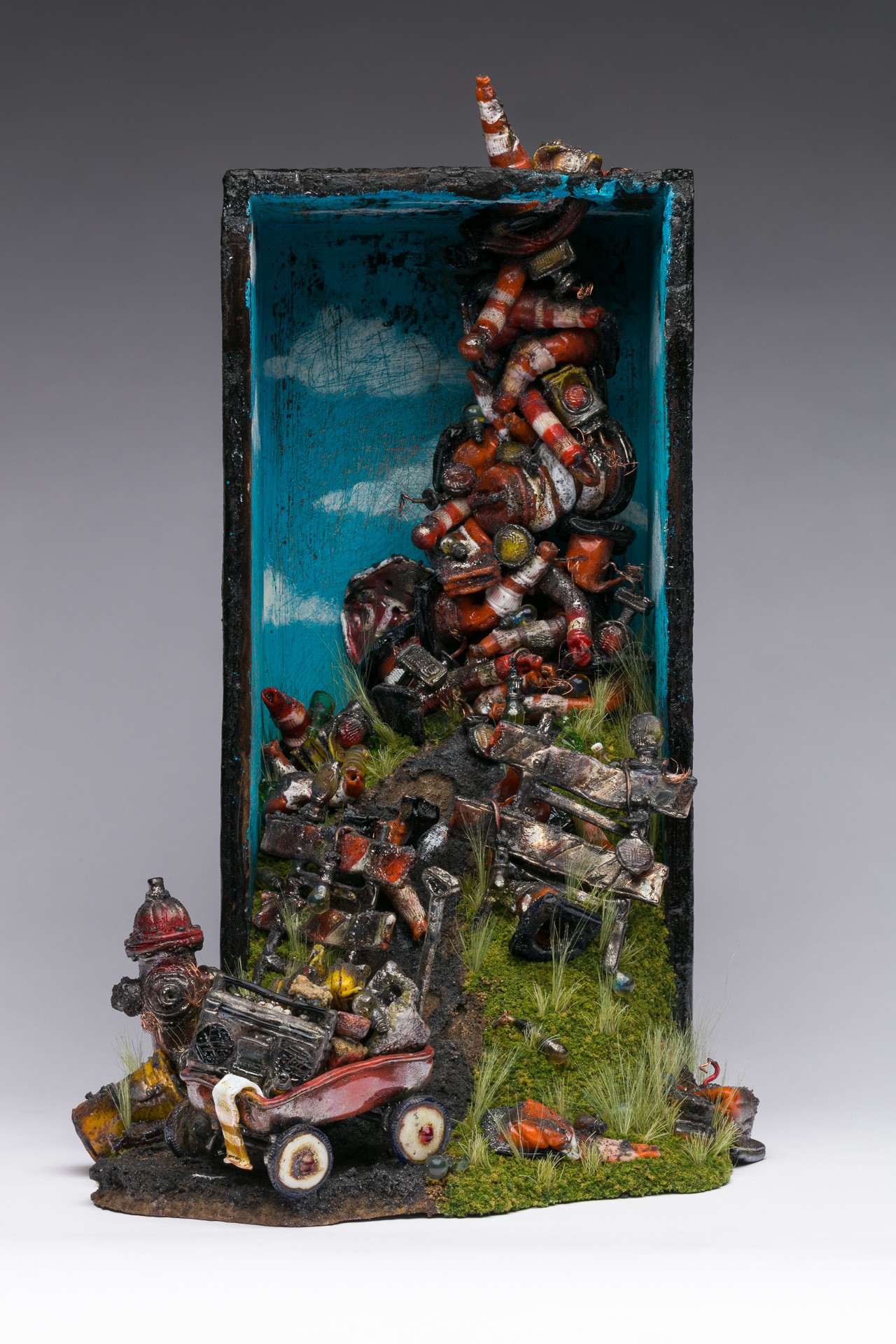We’re excited to introduce you to the always interesting and insightful Kimberly Thomas. We hope you’ll enjoy our conversation with Kimberly below.
Hi Kimberly, thanks for joining us today. Are you happy as a creative professional? Do you sometimes wonder what it would be like to work for someone else?
Yes, I couldn’t ask for a better life and career. It is difficult at times. The work can be stressful, or draining, but it is fulfilling. I don’t think I would be as happy if I had chosen a different profession. I’ve had regular jobs, so I don’t wonder what having a “regular” job is like. Being an artist isn’t so different from “regular job” life, though. There are many tings we do differently, but I have a routine, a list of things to accomplish everyday, bills to pay. There are meetings and administrative work, too. Being an artist takes discipline and drive just like any other career.


Awesome – so before we get into the rest of our questions, can you briefly introduce yourself to our readers.
I am a glass artist and interdisciplinary sculptor. The core medium in my work is borosilicate glass, I also use wood, steel, paint and other mediums. I attended The RhodeIsland School of Design where I majored in ceramics. After school I moved to California and worked as a special effects makeup artist. After I was laid off from my steady makeup gig I found flameworking. I started out in the pipe industry, and has since moved on to making sculptural works. Primary themes are concepts, questions, and theories about human nature, the undesirable facets of life and human nature, freedom from the corruption imposed by society, and expansion of self-knowledge. Even though the themes seem serious, my work in quite whimsical and darkly humorous, I combine realism and fantasy in my work and many of my sculptures are kinetic, I make obscure inventions like miniature models of flying machines. My vignettes are a vehicle through which I narrate earthly experiences. I am most proud of my style of working borosilicate glass, and my style of sculpture. There are many technical rules in working borosilicate glass, I break all of them and make it work. In the field of glass my work is very unique, of course there are other artists making narrative work, but none with the same style and innovation.



In your view, what can society to do to best support artists, creatives and a thriving creative ecosystem?
Buy our work, make a donation to an individual artist, craft school or art organization, go to exhibitions, craft fairs, galleries and museums. don’t ask us to lower our prices, or question the price of a piece, don’t ask if we are able to support ourselves. Take an art class or workshop at a local craft or art school, read about art.think about art, Ask an artist about their work, if you like their work, say so.If you don’t, don’t say anything. Don’t tell us what we should make next. Appreciate creativity even if you don’t understand it, the world would be a dreary place without art. It’s literally everywhere. Support can be a word of encouragement, like telling your artist friends you’re proud of them. If you don’t have any artist friends, get some! they’re awesome.



For you, what’s the most rewarding aspect of being a creative?
Telling my story, and fulfilling my purpose.reaching my highest potential as a maker. I have an interesting perspective. I want to use this perspective to make people think, understand themselves, the temporal and ethereal worlds. Artists have a gift, we see, hear and feel things differently. As an artist it is my job to interpret these feelings, sights and sounds and messages and relay them in a way they can be understood by the viewer. Art is supposed to make us feel, to move us in a way nothing else can.it stirs emotions, uplifts and art can bring us down or transport us to a world we didn’t know existed. This is the most rewarding aspect of being a creative.
Contact Info:
- Website: KimberlyThomas.art
- Instagram: @iroczii
- Other: Kim-thomas-6392.myshopify.com
Image Credits
Ryan Patrick Hooper Silas Grimes Wes Magyar


